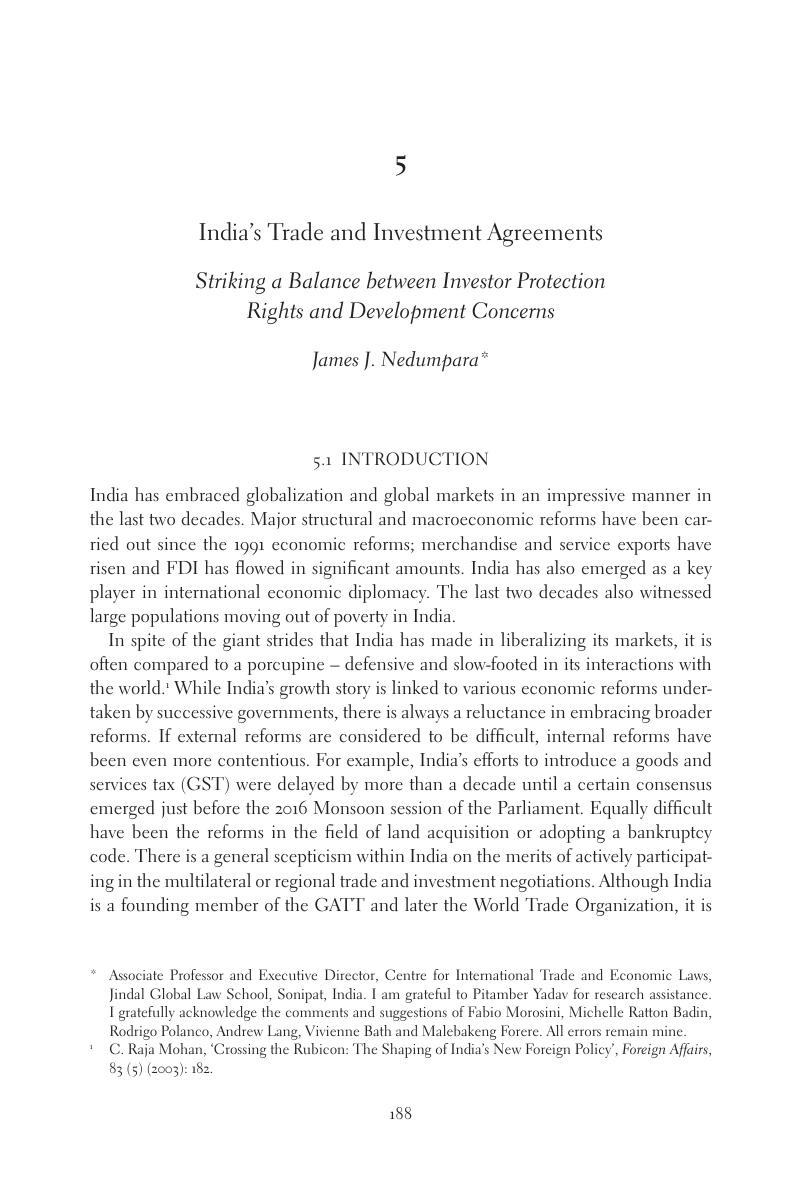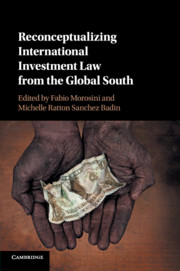Book contents
- Reconceptualizing International Investment Law from the Global South
- Reconceptualizing International Investment Law from the Global South
- Copyright page
- Contents
- Notes on Contributors
- Foreword
- 1 Reconceptualizing International Investment Law from the Global South
- 2 The South and Alternative Models of Trade and Investment Regulation
- 3 The Chilean Experience in South-South Investment and Trade Agreements
- 4 Australia and the Asia-Pacific
- 5 India’s Trade and Investment Agreements
- 6 Navigating between Resistance and Conformity with the International Investment Regime
- 7 The New South African Protection of Investment Act
- 8 Experimenting with International Investment Law
- 9 Foreign Investment, Development Strategies, and the New Era in International Economic Law
- Index
- References
5 - India’s Trade and Investment Agreements
Striking a Balance between Investor Protection Rights and Development Concerns
Published online by Cambridge University Press: 20 October 2017
- Reconceptualizing International Investment Law from the Global South
- Reconceptualizing International Investment Law from the Global South
- Copyright page
- Contents
- Notes on Contributors
- Foreword
- 1 Reconceptualizing International Investment Law from the Global South
- 2 The South and Alternative Models of Trade and Investment Regulation
- 3 The Chilean Experience in South-South Investment and Trade Agreements
- 4 Australia and the Asia-Pacific
- 5 India’s Trade and Investment Agreements
- 6 Navigating between Resistance and Conformity with the International Investment Regime
- 7 The New South African Protection of Investment Act
- 8 Experimenting with International Investment Law
- 9 Foreign Investment, Development Strategies, and the New Era in International Economic Law
- Index
- References
Summary

- Type
- Chapter
- Information
- Publisher: Cambridge University PressPrint publication year: 2017

